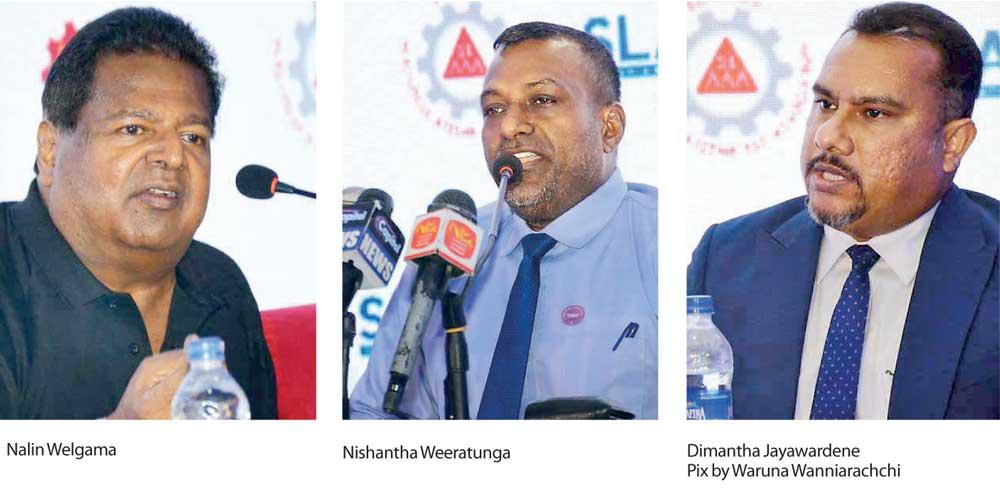Reply To:
Name - Reply Comment

By Nishel Fernando
The introduction of Standard Operating Procedures (SOP) has sparked significant boom in Sri Lanka’s automotive component manufacturing and Assembly Industries, generating an estimated US$ 800 million in export revenue per annum after attracting an estimated Rs.16 billion in investments.
The Ministry of Industries in 2021 launched the Standard Operating Procedure (SOP) for Local Assembly of Vehicles and Automotive Component Manufacturing to encourage world renowned brands to locally assemble vehicles and to boost exports of automotive components.
“Assemblers alone, I reckon would have invested in the north of Rs.10 billion, because you have to setup a plant, to provide working capital and employment etc. On the component side, it could well be Rs.5-6 billion at this present moment, and its growing rapidly,” Ideal Motors Founder & Executive Chairman Nalin Welgama told reporters in Colombo yesterday.
He was speaking at a press conference organised by the Sri Lanka Automobile Assemblers Association (SLAAA).
According to Automobile Component Manufacturing and Assembling Sector Advisory Committee Chairman Dimantha Jayawardene, Automobile Component Manufacturing, Automobile Component Manufacturing sector contributes around US$ 800 million export revenue per annum.
Since the initiation of SOP, the number of Automobile Components produced in the country has grown from around 3-4 components to over 20 components including tyres, auto radiators, hydraulic & oil cooler, industrial radiators, locomotive radiators, brake liners , bucket and bench seats etc.
The growth of the automobile components manufacturing is driven by the demand stemming from assemblers.
Welgama noted that the local demand for locally assembled vehicles is a crucial factor for the development of both automobile assembly and automobile components manufacturing industries in Sri Lanka.
“We (assemblers) need to maintain a minimum of 10-12 percent gross profit margin, otherwise, we can’t sustain operations,” he stressed.
Given the majority of automobile components manufactures are SMEs, Industrial Development Board (IDB) Deputy Director General Nishantha Weeratunga noted that it may take few years for component manufactures to invest in manufacturing of new components as demanded by assemblers. Hence, he outlined that profitability of component manufactures is critical to make such investments.
In order to export, he stressed that it’s a must for components manufactures to obtain original equipment manufacturer (OEM) status with a renowned global brand. As most of the global automotive players from countries such as Japan are not willing to come into Sri Lanka given the small market size, he suggested that Sri Lanka should focus on Indian automotive players who are rapidly growing globally.
He noted that the absence of automotive R&D and testing organisation is a main challenge for Sri Lanka’s domestic automotive industry as the country needs to rely on India to conduct such activities.
Overview
Sri Lanka has 90 registered automobile component manufacturers and 31 registered vehicle assemblers. Out of 31 vehicle assemblers, 19 are already in operations and the remaining assemblers are on the way to commence operations.
The industry has created over 3000 direct employment and 5000 indirect employment opportunities over the past three years.